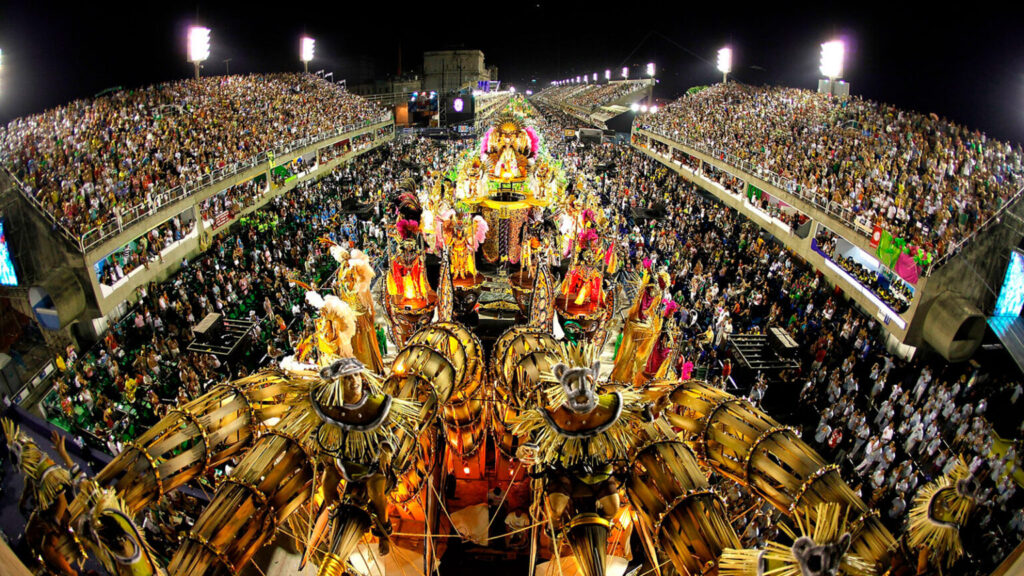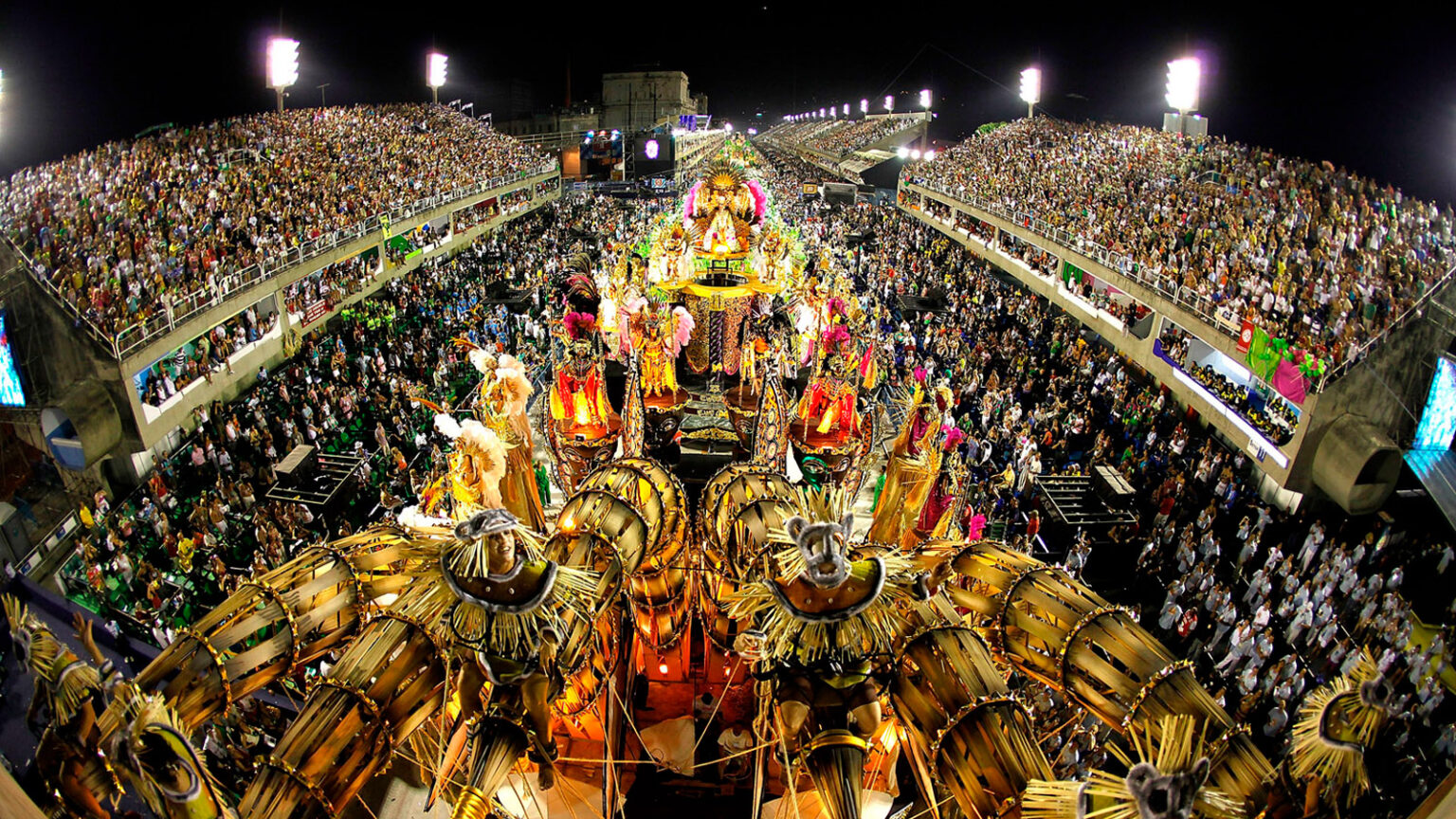
What does the Carnival Celebration Mean?
Did you realise that this is what it means to celebrate Rio de Janeiro’s carnival? Since its inception, the carnival has been the pre-Easter period when you can indulge in excess and lose control.
It’s an old holiday where the most prevalent characteristic seems to shed its shame. Get rid of the sensation of mockery that frequently keeps us from having pleasure. a crucial practise especially for dealing with everyday events.
No one can agree on how the word “carnival” came to be. Some claim that it derives from the Latin phrase carnem levare, which means “to give up the flesh.” This refers to the actions you wish to do immediately before deciding to forego the formality in the strict dietary sense. It denotes the final day of indulgence before Lent rituals begin.
It is also said that the goddess Karna or the karna deity may have inspired the name. In reference to the gold earrings that were worn, the Sanskrit word for “ears” is utilised.
There is no doubt that carnivals are well-liked events with a lighthearted atmosphere. The most extreme opponents of the carnival—undoubtedly religious fundamentalists—call it Carne a Baal (the devil) and view the festivities as sinful.
The carnival is held right before the start of Lent. The same period of time that Jesus fasted in the desert—forty days before Easter. Despite being a pagan holiday, it has connections to the holy week celebrations.
I’ve always believed that the carnival offers a thorough representation of all the arts. I’m referring to art in practically all of its forms (plastic, scenic and audio-visual). A parade is a spectacle that showcases art in all of its forms, including theatre, music, poetry, dance, painting, sculpture, and many other plastic arts.
Carnival appeals to me because it gives me the chance to exercise more freedom and express myself freely. I work on developing my identity all year, but I need to stop being myself at carnivals. Today, a costume parade is the unifying form of celebration. Every mask and costume has an untold history. What narrative do you have to share?
Carnival’s historical context
Some historians claim that the origins may be found in ancient Sumer and Egypt, more than 5,000 years ago. In the fifteenth century, Spaniards and Portuguese immigrants spread it throughout Europe and carried it to America. However, certain pre-Hispanic and African-American old-party components have survived.
In order to implore the gods to drive away evil spirits and provide them the gift of fertility from the ground, the Sumerians used disguises five thousand years ago. Since then, the carnival idea has changed and been reinvented. The celebrations were held in Bacos’ (the Roman wine deity) honour. He has always been ludic or pagan, maybe as a result of this allusion.
The carnival has always been an inclusive one. Social hierarchies are difficult to detect during the celebration. Each of us is the same. There is no representation for money, skin tone, political leanings, sexual preferences, or religious beliefs. What sets us apart at these gatherings are our antics, dancing, and singing abilities.
Symbolisms of Rio de Janeiro’s Carnival
Carnival is a symbolic holiday, both collectively and individually. The idea of disguising oneself suggests the telling of a tale, whether or not it is true. Each component represents a reality on its own. It’s considered to be a very well-kept secret in the spiritual realm. a form of mystical alchemy. Rio de Janeiro’s Carnival is said to as the occasion to upset the existing order. The moment when the societal and personal shadows are released.
For individuals who have been suppressed, this is a moment of effervescence when their most evil tendencies manifest. Before light and darkness meet, the spiritualist community claims that it is important to recognise the presence of darkness. It is described as a macabre celebration in the most critical way. According to this theory, the carnival is when the vices of the most repulsive traits, more acquainted to the fallen man, are satiated. Carnival is comparable to the final binge or smoke before quitting addiction.
Numerous components serve as important carnival emblems. Many different forms of masks are worn, for instance, in Italy. Each one of them stands for a certain personality or social position in society, including those who make political choices, artists, goofy characters in the neighbourhood, important women, and jesters, among many more. The symbolic portrayal of carnival has changed over time as a result of the symbolism of animals, natural components, and even circumstances.
These ceremonies revolve mostly around two characters. The queen and her king Momo typically rule carnival celebrations. The highest emblem in the carnival’s hierarchy is the queen. Her charm and attractiveness give her strength. She is the person who commands the parades. The community is involved in her selection as queen, which happens before the procession.
Another one of the primary characters is King Momo. In Greek mythology, he stands in for the sarcastic, mocking, and sardonic personality. In his eyes, beauty is a quality without fundamental significance. The Garota is very important during carnival in Rio de Janeiro. It is a voluminous woman performing a grand dance motion in time to samba music.
The Garota must train for several days all year long in order to prepare. need extremely strong physical stamina to endure hours of difficult dancing that involves leg and hip motions that use quite a lot of energy.
Río de Janeiro
Rio de Janeiro is said to be the most beautiful city among Brazilians with good reason. Rio has roughly 7 million people living in a small area confined between the sea and the mountains. Embrace Christ the Redeemer, Rio de Janeiro’s most recognisable structure and measuring 38 metres in height, forever.
The world’s largest carnival celebration takes place in Rio de Janeiro. It is referred to as the pinnacle of Brazilian expressiveness. It is the world’s most renowned gathering. Rio is now the most well-known city in Brazil and the entire globe thanks to the celebration of this fiesta.
The celebration consists of a two-day parade, which is an amazing earthly procession. The identity found there is what matters. Being Brazilian is an honourable feeling. The spirit derives from the customs of the original Amazon dwellers. Drums and percussion instruments were used by Native Americans and Africans to add to the music. The processions were added by the settlers for religious reasons.
The surrounding nature and economy are impacted by the most famous carnivals in the world. Numerous businesses start up and support new commerce. The nearby villages devote a significant amount of effort to creating costumes, organising parades (comparsas), and practising songs and dances.
Products and services that are only offered for sale on specific days support the industry associated with that celebration. Entrepreneurs who saw a lucrative and widely varied business opportunity fed Rio de Janeiro’s economic ecosystems. These options include, among many others, the sale of confections, the automation of parade’s mobile elements, dancing lessons, and technological services.
Over time, residents have contributed to these projects the ingenuity to their job and lifestyles that comes from a ferocious and ardent nationalist feeling and the audacity of the Sao Paulo commercial trade. The festival’s primary work force is located in the favelas or slums. The majority of samba schools are located in those regions. There are those that live in really perilous financial situations and put in a lot of effort throughout the year to succeed.
Millions of costumes and accessories are stored for the parade at the Mangueira’s deposit, one of the most prominent samba schools, which is located on the opposite side of the city. This is a whole industry.
The comparsas, a procession, rehearse their dance moves and pirouettes over the course of two days on a 1.5 kilometer-long runway within the sambadrome. They perform for a group of 40 judges who will be judging the music, lyrics, costumes, and choreography. The samba schools permit outside participants with a three-month preparatory period prior.
The parade: a time machine and delusions
Watch the show to start your time travel adventure. You experience each dream via You will instantly become a part of their made-up universe that is on exhibit throughout the procession and dance to the drums while being compassed by your hips. There is no way to escape the beat; you must give in and follow it.
The historical substance of fantasies varies widely. In terms of movement and visual variety, they are likewise varied. I could sway to the beat of the electric samba while taking a virtual tour of several Rio de Janeiro’s carnival editions from the comfort of my computer. I was taken aback by the variety of tales and advances. On swimming pools, I observed air dancers being propelled. The use of technology is unexpected.
Technology and innovation have been incorporated into the carnival in such a way that nothing appears to be illusory. Additionally, I saw enormous creatures jiggling, some with basic mechanical movements and others strong enough to eat a stocky dancer in one bite. In front of little fishing boats, I observed charmed snakes with independent activity that seemed to honour both the history of peasant murder and commercial fishing. You feel as though you are in a multi-universe vortex because of the contrast between the storylines.
I observed dancers in a balance performance that defied the laws of gravity at the peak of each dream. Due to the physical demands placed on the dancers, they are sporty dance routines. The Rio de Janeiro’s carnival welcomes everyone. I saw examples of people with disabilities participating in this cultural phenomena. The level of applied technology in some fantasy visual effects may be so high that you may begin to doubt reality. The scale of certain elaborations can be comparable to a medium-sized structure, and they may display complex semi-industrial mechanics in their motions.
One of the most well-liked attractions is the seductive aura that garotas emit. Una Garota, which translates to “female” in Portuguese, is a dance-related deity that moves to the beat of the drums. Their involvement goes much farther than the sensual. Nearly all of the prior preparation was for the Olympics. Hip swaying for 1.5 miles demands it.
Music is a collaborative effort. Hundreds of musicians are timed and coordinated to the appropriate samba rhythm. You may imagine reenacting historical events or living in the tunnels. They are also capable of predicting potential outcomes. Some communicate social, environmental, and religious themes. They all signify the educational aspect of the Rio de Janeiro’s carnival. If you choose to be a first-class witness, you will feel feelings of majesty, inventiveness, and grandeur.
When the sun is concealed, brightness, frost, and lenses combined with a brilliant display serve as a substitute for it. I was taken aback by the sight of a rasta in my virtual tour, whose hair was braided by multiple garotas and dancers and was more than 2 metres in length. The Avengers will be there to remind you that you are secure since they provide world peace, so you can simply pass them that picture, so characteristic of the suburbs and every day.
Every individual is crucial. Sometimes there are many persons energising certain parts of the march. The coordination of the collaboration is accounted for by the weight, the dexterity of the motions, and the flawless synchronicity.
The Important Players In Rio de Janeiro’s carnival
The town’s queen is Isabel. She has been taking part for a while as the queen of the drums, constantly standing next to the orchestra and motivating the bands that come after her. Being a queen needs physical fitness, dance ability, and aesthetic sense. Attending the Garota queens is the entire team. Each year, trainers, costume designers, makeup artists, and samba teachers together to produce the greatest product.
They are stereotyped as females with questionable lives since they reside in favelas and are characterised by ignorance. The truth is that many of them have family responsibilities, are working mothers, and work in those occupations. They have a passion for dancing, a desire to stand out in the parade, and a fierce desire to prevail in the competition. There are no social strata among them; they are all queens and goddesses.
Conclusion
Without a doubt, everyone in the globe celebrates carnival. Some of the iconic locations where carnival has a big tourism influence are Tenerife, Las Palmas, and Murcia in Spain; Callao in Venezuela; Cologne in Germany; Oruro in Bolivia; and Venice in Italy. I will undoubtedly fly to Rio de Janeiro to take part in this carnival without showing any bias and with a genuine feeling of opportunity. I’m sure I’ll go by private jet to make the most of my time because I have a few days of relaxation available. Once there, I’ll dedicate myself to taking part in the greatest and most amazing carnival the world has ever seen. My itinerary must include a visit to the Rio de Janeiro Carnival.
If you want to know about Valentine’s Day and the history of it you can check HERE.

